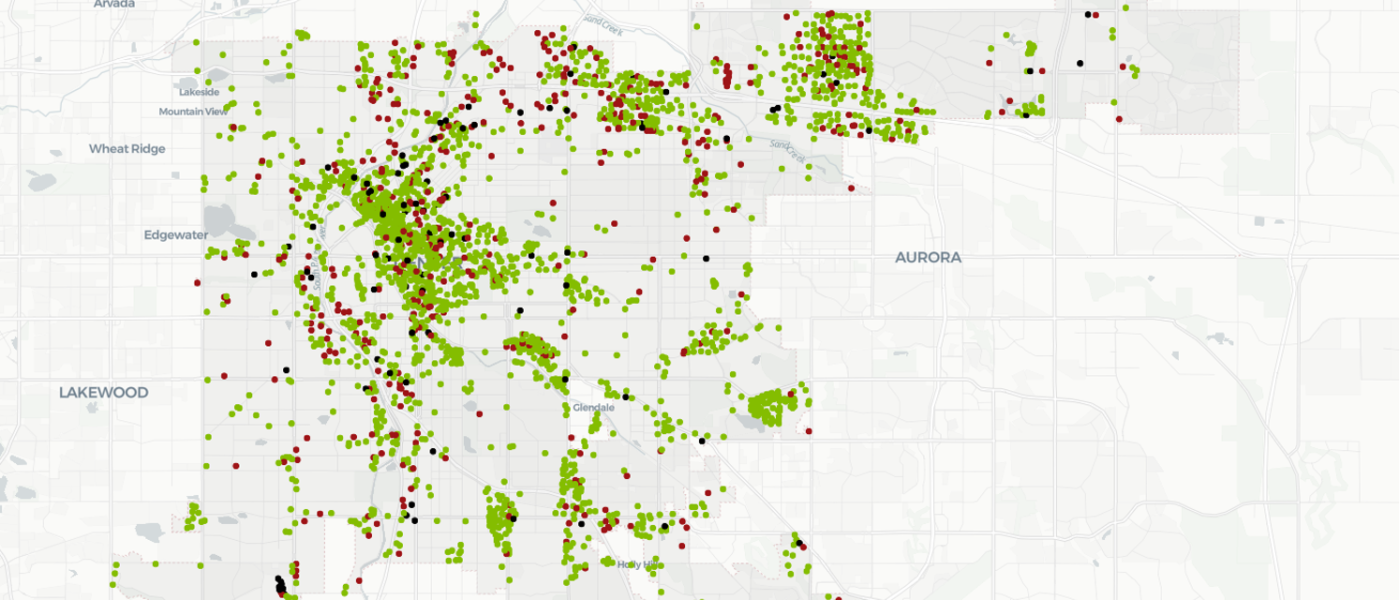Energize Denver | Staying Educated & Engaged Ahead of 2024 Benchmarking
By Adam Lucero, Project Executive at Kiewit Building Group
Three years ago, NatGeo UK ranked Denver as the 4th most sustainable destination in the world. Between then and now, the City and County of Denver have worked to maintain and improve this ranking by enacting the Energize Denver legislation in 2022.
Energize Denver is the outcome of a city-wide effort to improve existing commercial and multifamily building energy performance. Denver's 2030 energy performance targets include a series of benchmarks that commercial buildings will be required to meet, with the first benchmark in this series occurring next year, 2024. The plans are in motion, and there are opportunities to get general contractor partners involved early in the process to help owners facilitate these updates in an impactful way.
With the benchmark right around the corner, what is the real impact of Energize Denver, and how can general contractors (GCs) take action to ensure requirements are met?
A Crash Course on Performance Requirements
To fully understand the impact of Energize Denver, commercial building owners and the GCs that design and develop the buildings must be informed of the performance requirements.
According to the City and County of Denver, the Energize Denver Ordinance establishes Energy Use Intensity (EUI) targets for buildings 25,000 SF and larger. Buildings must meet a final EUI target by 2030, with interim targets in 2024 and 2027.
EUI measures a building's energy use per square foot of area. As all building energy usage is measured in different units, EUI simplifies this to a single number and is a standard metric enabling comparison between different-sized buildings. The more energy efficient a building is, the lower its EUI will be.
There are several steps buildings must take to meet the ordinance's requirements, including Completion of benchmarking, applying for a target adjustment, conducting an energy audit, determining eligibility to receive a rebate, investigating below-market-rate financing programs, and assessing capital improvement plans.
The Role of Contractors and Service Providers
GCs play an essential role in the updates required in the Energize Denver legislation as they offer unique technical perspectives and knowledge on preconstruction, design review, constructability, and value management. Regardless of the contract model, the obligation of the GC to the building owner is to provide cost and schedule certainty.
GCs must take full advantage of their preconstruction process, from assessing the appropriate contracting structures, to vetting and engaging with the most relevant designers, consultants, trade partners, and partnering with subcontractors. Building a well-versed team lays the foundation of any project.
For any building, reviewing the energy costs, determining the corrective actions, and the pay-off period are critical to assess the financial feedback. As outlined by Energize Denver, as a GC, "you control the budget and therefore should be providing real-time cost data for sustainable design strategies in order to better inform the owner and aid with design decision-making."
Leaders in construction are deeply ingrained in conversations about construction costs, material availability, and the full spectrum of a building's design process. From the contractor perspective, GCs play an integral role in Energize Denver's goals of ensuring construction maximizes efficiency and equity. GCs will consider the design-build methodology when applicable, work through value management, look at all components of the updates to ensure they drive a meaningful return on investment and determine how they can make an impact in a timely manner while ensuring they meet the criteria of the mandate.
Energize Denver in Action
According to Energize Denver’s Annual Report from 2019, hospitals have an average weather-normalized site EUI of 249 compared to an average weather-normalized site EUI of 51 for a non-refrigerated warehouse. Healthcare facilities consume close to 10% of the total energy used in US commercial buildings and spend more than $8 billion on energy every year. When operating a building is the longest part of its life cycle, it's essential to identify areas that need updating to adhere to policies like Energize Denver.
Certain methodologies are somewhat “easy” fixes for major medical and healthcare facilities, bringing them up to speed and aligning with performance requirements. Tactics such as implementing LEDs, daylight controls, and adding occupancy sensors are relatively small and inexpensive changes impacting EUI significantly. Healthcare facilities will need GCs to help manage the actions to change the status of their EUI, with additional coordination between designers, subcontractors, facilities, and end-users. In an industry such as healthcare, where physical spaces directly impact an end-user, the “easy” fixes and changes are bound to take more time.
From the bigger picture perspective, as part of an organization's energy conservation measures for existing and new projects, there are many opportunities to introduce sustainability initiatives, such as bundled energy projects, making a big difference in a facility's day-to-day operations and the owner's bottom line.
Planning for the Future
Amid the rollout of Energize Denver, it is incumbent upon building and property owners to implement certain adjustments falling within the list of performance requirements. Still, it is up to the GCs, designers, architects, and engineers to position themselves as valuable resources when implementing these changes.
Those within the built environment are sophisticated enough to interpret early schematic design, understand and fast forward the design progression, and come up with a reasonable price and budget to build within the requirements of this new legislation.
To effectively meet Energize Denver's benchmarks, it is critical that we, as key players in mapping Denver’s buildings and skyline, challenge our clients, partners, designers, architects, and so on to look at value engineering and provide the most strategic solutions that will help buildings meet the benchmarking requirements.

